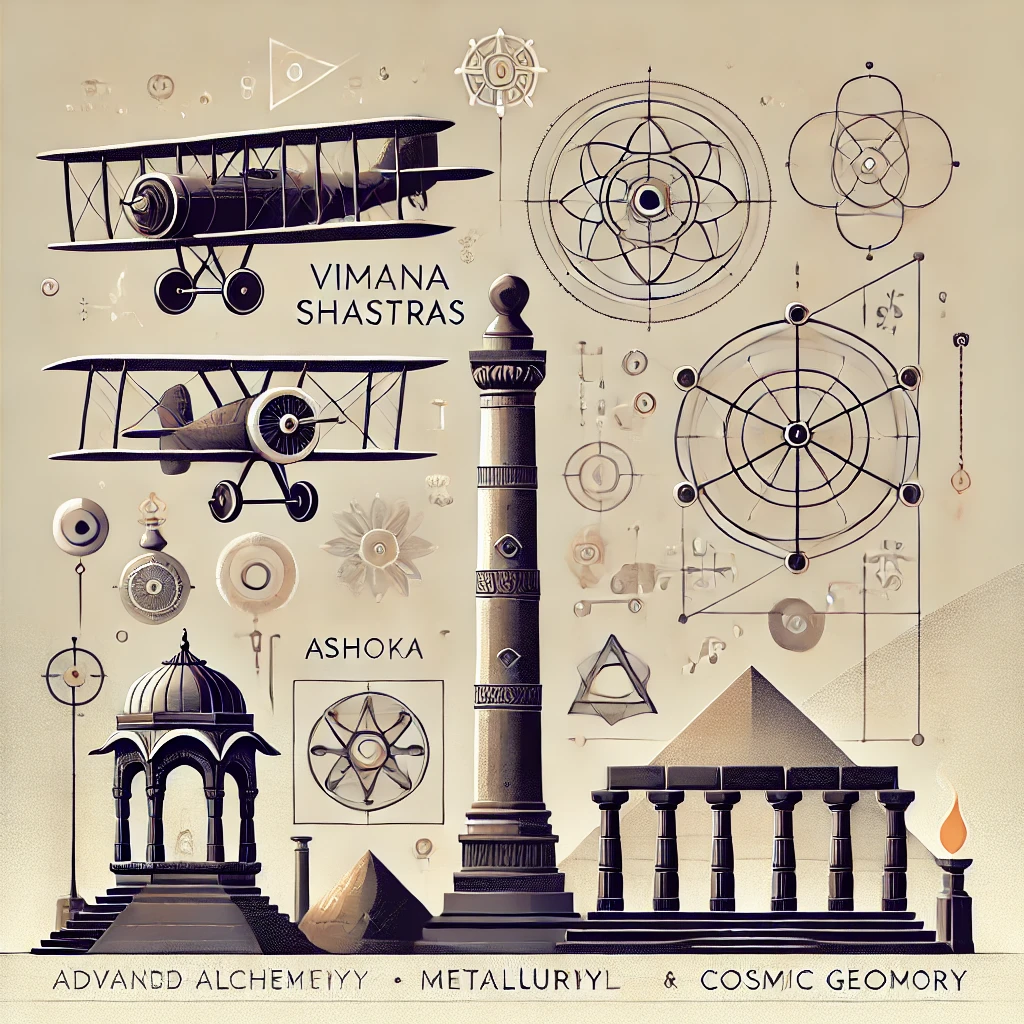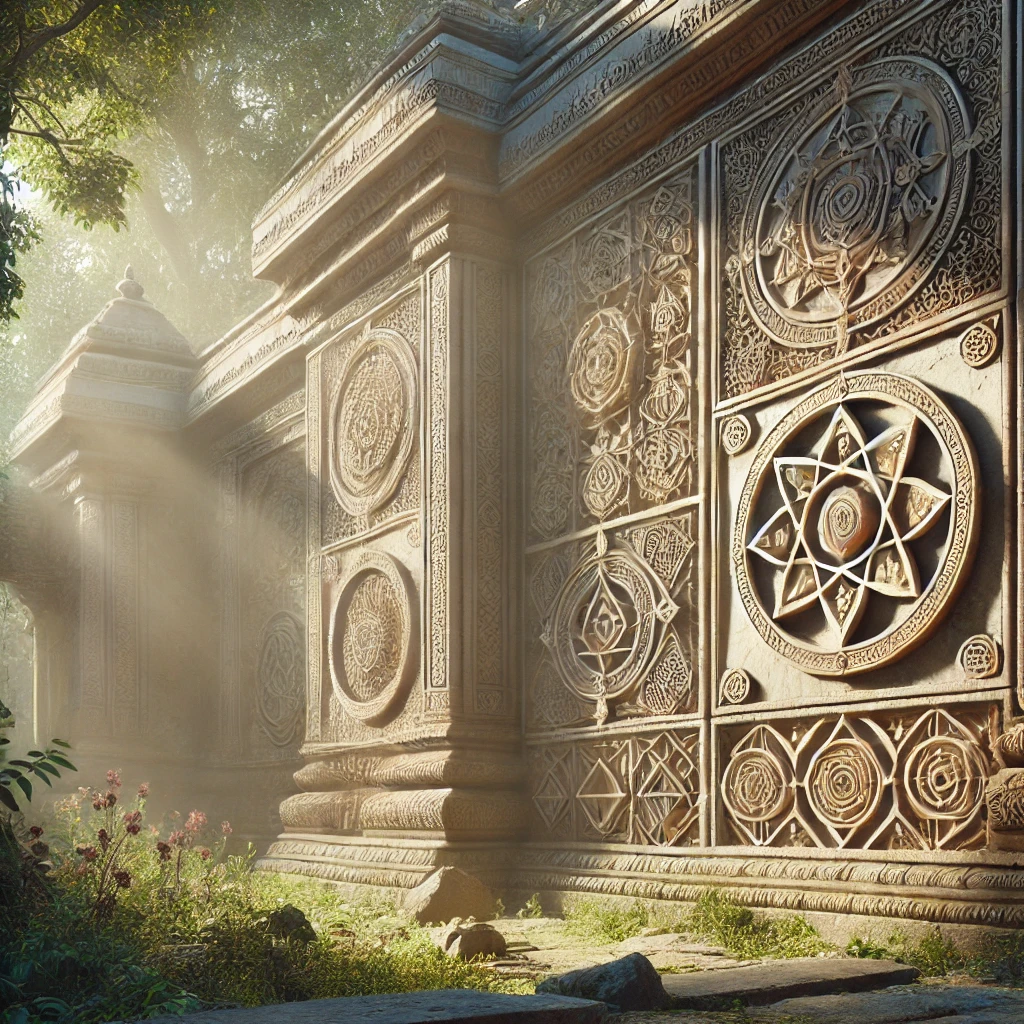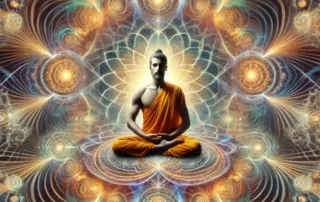Naadayaama draws inspiration from the wisdom of India’s ancient sages, who viewed geometry, energy, and sound as the essence of reality. Sacred figures like Adi Shankaracharya, Maharishi Bharadwaja, and Rishi Agastya contributed knowledge that far surpasses modern scientific discoveries. The Shri Yantra, Vimana Shastra, and Spanda philosophy exemplify how ancient India saw sacred geometry not only as a spiritual tool but also as a cosmic blueprint for energy and consciousness.
At Naadayaama, we honor this wisdom by merging the geometric and vibrational sciences through our sound healing practices. Our sessions serve as a journey back to these ancient roots, allowing participants to experience the boundless energy of cosmic pulsation and harmony that still lives within us. Join us to uncover these hidden dimensions and reconnect with the timeless resonance that unites us all.
Recognizing these contributions not as myths but as genuine knowledge systems, we open the door to rediscovering a holistic science that binds spirituality and technology seamlessly. Through this understanding, we honor the vision of our rishis and embrace a path where sacred geometry serves as a bridge between the visible and the invisible, the material and the divine.

India has a long and rich tradition of exploring sacred geometry, symbols, and sound, integrated deeply with spiritual practices and philosophies. Many rishis, scholars, and philosophers have contributed groundbreaking discoveries that reveal the inherent link between geometry, consciousness, and the universe. Unfortunately, much of this ancient knowledge has been obscured or lost due to colonial interpretations and distortions of history. Below are some Indian alternatives to modern figures like Nassim Haramein and Jain 108, as well as Indian rishis and philosophers who made breakthrough contributions to sacred geometry, symbols, and cosmic patterns.
1. Sri Adi Shankaracharya – Advaita Vedanta and the Mandala
Adi Shankaracharya (8th century CE) is revered as a key philosopher who revived the non-dualistic school of Advaita Vedanta. He explored the concept of “Oneness” (Advaita), which aligns with the geometric principle of unity in multiplicity. Shankaracharya emphasized that everything in the universe is interconnected, and the multiplicity of the world is an illusion (maya), much like how the circle or mandala symbolizes wholeness, with every part being interconnected.
One of Shankaracharya’s lasting contributions to sacred geometry can be seen in the Shri Yantra, a powerful geometric diagram used for meditation and spiritual awakening. The Shri Yantra is composed of interlocking triangles that represent the union of Shiva and Shakti—the masculine and feminine cosmic forces—demonstrating that the geometry of the universe reflects the spiritual and material worlds. It is said that deep meditation on this sacred symbol can open the path to self-realization, aligning with Shankaracharya’s teachings of non-duality.
2. Maharishi Bharadwaja – Ancient Vimana Shastras and Sacred Geometry
Maharishi Bharadwaja, an ancient Indian sage, authored the Vimana Shastra, an ancient text that explores the science of aviation, space travel, and mechanics. The designs described in these texts were geometrically precise, containing information on cosmic geometry that ancient rishis believed mirrored the structures of the universe. This reflects an advanced understanding of sacred geometry, where shapes and symbols are not only metaphysical but technical blueprints for energy and space manipulation.
The Vimana (flying crafts) were said to operate on energy sources aligned with the cosmic frequency and geometry of the universe, much like modern studies linking sacred geometry to energy fields and quantum physics. Bharadwaja’s work was an early understanding of how geometric principles underpin all energy systems, resonating with both the material and spiritual realms.
3. Rishi Agastya – Agastya Samhita and Ancient Batteries
Rishi Agastya is one of the most prominent figures in Indian spiritual tradition. His contributions, as detailed in the Agastya Samhita, reveal ancient Indian knowledge of electrical energy and technology. According to this text, Agastya described an ancient battery using copper, zinc, and vinegar—a scientific marvel that predates modern battery technology by thousands of years. Agastya’s work demonstrates the application of sacred geometry and energy principles in technology, revealing that the spiritual sciences of ancient India extended into practical inventions.

Varahamihira – Cosmic Geometry in Astrology and Architecture
Varahamihira, a renowned scholar from ancient India (505–587 CE), made significant contributions to astronomy, astrology, and architecture through his texts like the Brihat Samhita. His work details how cosmic patterns, planetary alignments, and geometric designs influence both human destiny and architecture. He explored the concept of Vastu Shastra, the Indian science of architecture, which is based on the interplay of sacred geometry and natural elements.
Varahamihira’s Vastu Shastra principles are based on the alignment of buildings with cosmic forces and geometric symmetry, ensuring the harmonious flow of energy. He demonstrated how sacred geometry like mandalas, grids, and other symbols are deeply interwoven with human well-being and cosmic energy fields.
5. Baudhayana – Baudhayana Sutras and the Geometry of the Universe
Baudhayana, an ancient Indian mathematician and rishi (around 800 BCE), is credited with some of the earliest known works on geometry and Pythagorean principles, centuries before they were discovered in Greece. His Baudhayana Sutras describe the precise geometric formulas for building sacrificial altars and temples, emphasizing the need to align structures with cosmic energy fields.
Baudhayana’s work, which includes the Pythagorean theorem and Pi calculations, shows how sacred geometry was not just a symbolic practice but also a practical application in mathematics, architecture, and spiritual rituals. These principles of cosmic geometry were designed to reflect the order of the universe, a view shared by ancient Indian rishis who saw geometry as a language of spiritual awakening.
6. Swami Vivekananda – Energy, Vibration, and Sacred Geometry
Swami Vivekananda was one of the most prominent figures in bringing ancient Indian spiritual knowledge to the West. He linked the concept of Prana (energy) and Shabda (sound) with scientific theories about energy fields and vibrations. Vivekananda often spoke about how the vibratory nature of the universe, when properly understood, opens the path to spiritual transformation. He believed that sound, vibration, and geometric patterns (such as the Yantras) could unlock higher states of consciousness. He famously said:
> “All matter is energy vibrating at different frequencies. By focusing the mind on geometric symbols like the Shri Yantra, we align ourselves with the cosmic vibration.”
7. Kashmir Shaivism – Spanda and Cosmic Pulsation
In Kashmir Shaivism, the concept of Spanda (vibration) refers to the divine pulsation that is at the core of all creation. This philosophy, deeply rooted in sacred geometry, emphasizes that the universe and all its manifestations are a result of this cosmic vibration. The Shiva Sutras, which are foundational texts in this tradition, explore how this pulsation connects every individual to the universal consciousness. The Shri Yantra and other geometric symbols in Shaivism mirror these teachings, representing the geometric pulsation of divine energy.
Lost Inventions and Knowledge
Many of these incredible insights and inventions were lost or diminished due to colonial misunderstandings and the imposition of Western historical narratives. Some key examples include:
Vimana Shastras: Often dismissed as myth, these texts contained descriptions of advanced aviation technology and energy systems far beyond their time.
Ancient Indian Alchemy and Metallurgy: India had advanced knowledge of metallurgy and alchemy, as seen in the Ashoka Pillar, which has remained rust-free for over 1,600 years. This reflects a lost understanding of chemistry and geometry in material sciences.
Shulba Sutras: The geometric knowledge from the Shulba Sutras, predating Greek mathematics, was not given recognition for centuries due to the focus on Western scientific achievements. This cannot be undone but awareness can bring light into our own profound education systems and bring back the glory of such immense knowledge through each one of you.




